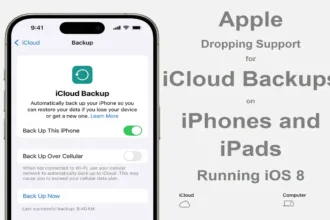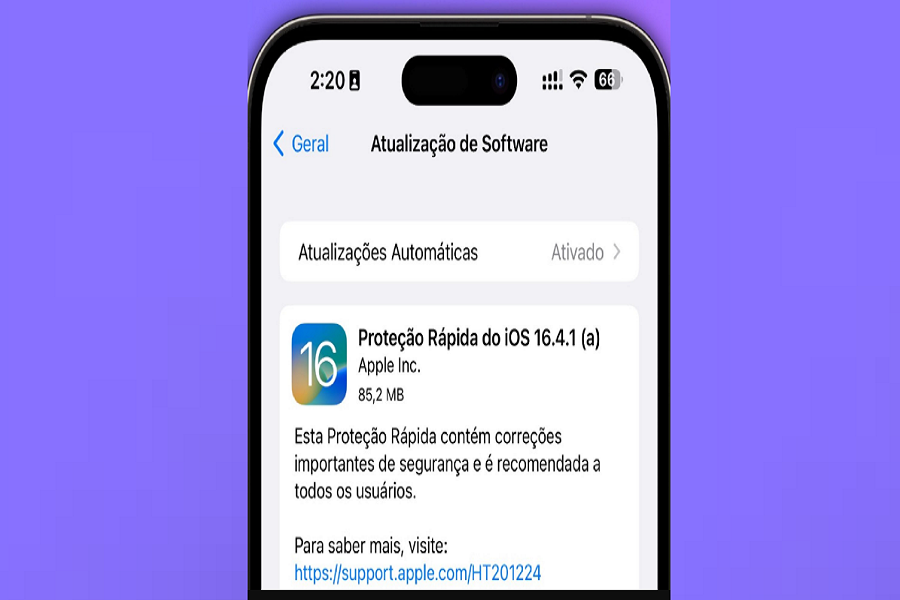In the ever-changing landscape of cybersecurity, Apple has taken a bold step forward with the release of the iOS 16.4.1 Rapid Security Response update. This innovative approach to security enhancement showcases Apple’s dedication to keeping its users safe from evolving threats and vulnerabilities.
Let’s explore the intricacies of this groundbreaking update, its features, and its implications for the future of iOS security. Join us as we dive deep into the world of Apple’s latest security endeavor.
Initial Install Errors: How to Fix Them
Upon the update’s initial release, some users encountered errors while attempting to install it. These issues were primarily related to the device’s connection to the internet. Apple acted swiftly to address the problem, allowing users to successfully install the update without further complications.
Should you experience any difficulties during the installation process, it’s crucial to ensure that your device is connected to a stable internet connection, as this can significantly impact the success of the update.
Also Check: How To Fix “Unable To Verify Security Response” Error In IOS 16.4.1(a) Update
Update Size and Installation
The iOS 16.4.1 Rapid Security Response update is relatively small, coming in at a mere 85.2 MB. This compact size allows for a quick and seamless installation process. To install the update on your device, follow these simple steps:
- Open the Settings app.
- Navigate to General.
- Select Software Update.
- Follow the on-screen prompts to complete the installation process.
About the Update: Identifying the Security Response Update
After installing the update, users will notice two build numbers listed under Settings => General => About. The original 16.4.1 update will remain, with the addition of the new 16.4.1 Security Response, which has a build number of 20E772520a.
This secondary build number differentiates the security response update from the primary iOS update, ensuring users can identify the security enhancements applied to their device.
How to Remove OS 16.4.1 (a) from the iPhone?
In the event that the update causes any issues or complications, Apple has provided users with the option to remove it. This can be done by navigating to Settings => General =>Software Update and following the prompts to remove the iOS Rapid Security Response update.
This user-friendly approach ensures that users can easily resolve any update-related issues without requiring a computer or rolling back to a previous version of iOS.
What’s New? Enhanced Security Between Standard Updates
The support document provided by Apple explains that Rapid Security Responses are a new type of software release that delivers important security improvements between standard software updates. While Apple does not provide specific details about the vulnerabilities addressed in the update, the company has ensured that these responses offer enhanced security for iPhone, iPad, and Mac devices.
These security responses bridge the gap between major software updates, allowing Apple to rapidly address security vulnerabilities without waiting for the next scheduled release. This proactive approach ensures that users’ devices remain protected against emerging threats and newly discovered security issues.
Should You Install the iOS 16.4.1 Rapid Security Update (a) on Your iPhone?
Given the importance of security in today’s digital landscape, users are strongly encouraged to install the iOS 16.4.1 Rapid Security Response update.
The update offers essential security improvements, and if any issues arise, it can easily be removed without requiring a computer or rolling back to a previous version.
Battery and Performance on iOS 16.4.1 (a)
The iOS 16.4.1 Rapid Security Response update should not impact battery life or device performance. Its primary purpose is to address security vulnerabilities, ensuring that the overall device usage remains unaffected.
If, however, users encounter any battery or performance issues following the update, they have the option to remove it and restore their device to its previous state.
Upcoming Updates
The introduction of Rapid Security Responses signifies a shift in Apple’s approach to software updates.With the implementation of Rapid Security Responses, it’s unlikely that Apple will release a 16.4.2 update.
Instead, users can anticipate the next major update to be iOS 16.5, which will bring new features, enhancements, and improvements to the user experience.The final release of iOS 16.5 is expected to occur sometime in May, with iOS 16.6 betas potentially starting towards the end of the month. Users should also be on the lookout for the iOS 17 beta 1 release, which is likely to be unveiled around June 5th.
Final Words
The iOS 16.4.1 Rapid Security Response update is a critical step towards guaranteeing device security in today’s ever-evolving digital landscape. Apple users are encouraged to install the update to ensure their devices remain protected against emerging threats and vulnerabilities.






